Exploring the realm of image processing through the lens of Artificial Intelligence (AI) unveils a landscape where technology not only replicates human capabilities but also introduces new dimensions to how we perceive and interact with images. This article embarks on an examination of how AI has transformed image processing, highlighting significant advancements and considering both the challenges and future potentials. As we examine these developments, it becomes clear that AI’s role in image processing is not just about enhancing existing techniques but also about pioneering innovative applications that redefine our interaction with digital imagery.
Historical Overview of Image Processing
Image processing as a concept has come a long way from its rudimentary forms to the highly sophisticated digital methodologies we see today. Its evolution reflects not only technological advancement but also a deeper understanding of optics, mathematics, and computational theory. Here we talk about the journey of image processing, marking its significant milestones and the transitions that have turned it into a technology-rich field integrated with artificial intelligence (AI).
Initially, image processing started with simple techniques such as darkroom photography where the manipulation of images was largely manual, involving physical filters and controlled light exposure. It wasn’t until the mid-20th century that we began to see the quantum leap from analog to digital image processing. This transition was facilitated by the development of computers, which offered the ability to handle complex calculations quickly, something that was purely theoretical in the pre-digital era.
One of the key milestones in this journey was the introduction of digital scanners and printers in the 1950s and 60s, which digitized the process of capturing and reproducing images. The advent of these technologies laid the foundational framework for modern image processing. Following this, the development of Charge-Coupled Devices (CCDs) in the 1970s revolutionized the way images were captured and stored electronically. Suddenly, images could be directly processed, stored, and transmitted in a digital format without the loss of quality associated with analog methods.
The 1980s and 90s saw rapid developments in both computer technology and software algorithms. This period marked the beginning of computational image processing where algorithms were developed to enhance image quality, compress data for storage and transmission, and even generate artificial images through computer graphics technologies. The use of Fourier transforms for image enhancement and compression became a standard practice during this era; this mathematical technique allowed for the efficient alteration of images in the frequency domain, rather than directly manipulating pixels.
As internet usage exploded in the late 20s century and early 21 centuries, so did the need for efficient image processing for web-based applications. JPEG and GIF formats became widespread for their ability to compress images without a significant loss in quality, making them ideal for web usage.
The integration of AI into image processing marked another significant advancement in this ongoing journey. Machine Learning (ML) and later, Deep Learning (DL) algorithms transformed image processing possibilities. These technologies enabled automatic image classification, tagging, and even the generation of new images. Computer Vision, a field closely tied to AI, heavily relies on advanced image processing to analyze and interpret visual data from the world.
Today, with AI integration, image processing techniques can self-learn and adapt, making them far more powerful and efficient than their predecessors. AI-enabled image understanding includes facial recognition systems, autonomous vehicle navigation, augmented reality experiences, and much more. This advancement reflects not just on the technological capabilities but also on the broad applications and impacts on society.
To conclude, the evolution of image processing has been a journey of technological enhancements and the discovery of new methodologies. From manual adjustments in the darkroom to AI-driven automatic image corrections, this field has continually expanded its horizon, incorporating complex algorithms and computational techniques. As it stands, the integration of AI promises to push the boundaries of what image processing can achieve, blending human creativity with computational precision.
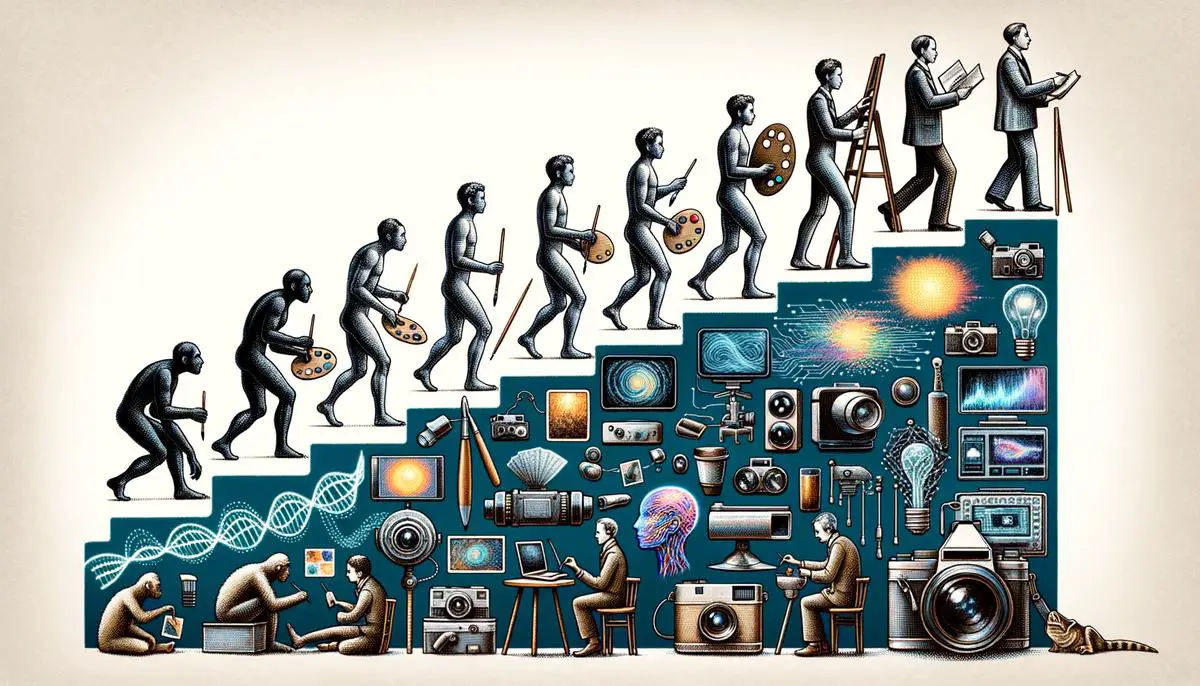
Fundamentals of AI in Image Processing
Venturing into the vast and intricate landscape of image processing through the lens of Artificial Intelligence (AI) unveils a realm where technology endeavors to replicate, and sometimes transcend, human capabilities in understanding and manipulating images. Core principles of AI, specifically Machine Learning (ML), Deep Learning (DL), and Neural Networks, stand at the heart of this transformative journey. These technologies harness the power of vast data sets and intricate algorithms to revolutionize how images are analyzed, interpreted, and transformed, offering a glimpse into a future where the impossible becomes merely challenging.
Machine Learning, as a fundamental pillar of AI application in image processing, employs algorithms that enable computers to learn from and make decisions based on data. Unlike traditional programming where rules are explicitly written, ML algorithms adapt their parameters based on the patterns they discern in data, making them particularly suited for tasks like image recognition where exact rules are hard to specify. This adaptability allows ML-based systems to improve continuously as they process more images, enhancing their accuracy in tasks such as identifying objects or classifying images.
Deep Learning, a subset of ML, takes its inspiration from the human brain. It utilizes Neural Networks with many layers (hence “deep”) to model complex patterns in data. These deep neural networks have proven exceptionally proficient in image processing tasks, including but not limited to image classification, object detection, and semantic segmentation. By allowing computers to learn high-level abstractions in data, DL enables nuanced understanding and interpretation of images, mirroring human insight but at a scale and speed unattainable by humans alone.
The crux of these advanced systems lies in Neural Networks, structures inspired by the neuronal mechanisms of the human brain. At their core, neural networks consist of interconnected nodes (analogous to neurons) that process input data and pass on their output to subsequent layers. This architecture allows the network to learn intricate patterns in images, from basic forms and textures in early layers to complex objects and scenes in deeper layers. The ability of neural networks to learn from vast amounts of data and their capacity to identify subtleties in images make them essential in pushing the envelope of what is conceivable in AI-powered image processing.
Leveraging these foundational technologies, AI has notably advanced the field of image processing. Neural networks, formed on principles of DL, delve deep into image data, unveiling patterns invisible to the naked eye. Through ML algorithms, AI systems refine their proficiency, iteratively enhancing their performance with each image processed. This dynamic interplay of ML, DL, and neural networks orchestrates the contemporary symphony of AI applications in image processing. From enhancing image quality to driving autonomous vehicles using real-time object detection, AI fosters a future where machines understand images not as mere pixels but as the embodiment of complex realities.
Garnering insights from these core principles, we navigate through an era where the processing and analysis of images become increasingly sophisticated. As we further explore the capabilities and potentials of AI in image processing, it’s crucial to understand the underlying mechanics—ML’s adaptable algorithms, DL’s brain-inspired architectures, and the neural networks’ capacity for pattern recognition. These foundational concepts not only fuel current advancements but also pave the path for novel applications that continue to redefine the boundaries of image processing technology, ensuring that the evolution of this field remains as dynamic and multifaceted as the images it seeks to understand.
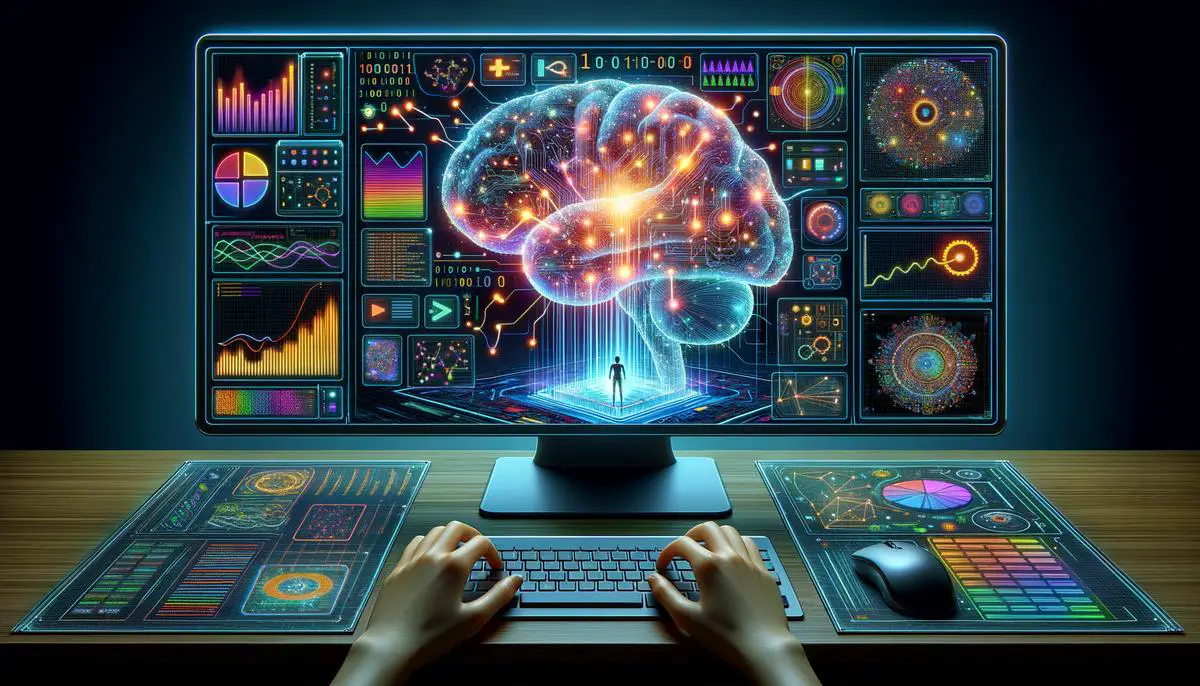
Impact of AI on Image Enhancement and Restoration
Diving deeper into the transformative role of AI in the realm of image enhancement and restoration, it’s clear that artificial intelligence has revolutionized the way we approach and improve visuals. The core of these advancements lies in sophisticated AI algorithms dedicated to various aspects of image processing, notably including noise reduction, resolution enhancement, color correction, and the meticulous restoration of historical photographs and artworks.
Noise Reduction through AI:
High levels of noise in images can significantly deteriorate their quality, making important details hard to decipher. This is where AI steps in, utilizing algorithms that meticulously analyze the image to distinguish between noise and important details. By learning from numerous examples, these AI systems develop an intuitive sense for what constitutes noise and apply corrections that effectively reduce it without blurring essential details.
Resolution Enhancement with Artificial Intelligence:
AI’s ability to enhance the resolution of images is perhaps one of the most appreciated aspects in both professional photography and general media consumption. Leveraging deep learning models, AI examines low-resolution images and predicts high-resolution counterparts with astonishing accuracy. This capability not only improves the visual appeal but also recovers important details that were not visible in the original, lower-resolution image.
Color Correction Facilitated by AI:
Color aberrations and inconsistencies can mar the beauty and accuracy of photographs, especially those taken under less-than-ideal lighting conditions. AI algorithms tackle this challenge head-on by analyzing images and automatically adjusting colors to reflect more natural tones and balances. Through deep learning, these models learn from vast datasets of well-corrected images, enabling them to apply nuanced corrections that enhance overall imagery without imposing unrealistic color schemes.
Restoration of Historical Photographs and Artworks:
The restoration of historical photographs and artworks entails more than just enhancing image quality; it’s about preserving and reviving our shared heritage. AI plays a crucial role here, as it can be trained to recognize patterns of degradation specific to old photographs and artworks. By understanding these patterns, AI-driven tools carefully rebuild lost segments, remove marks, and correct fading, breathing new life into invaluable pieces of history without compromising their original essence.
In summation, artificial intelligence has not only transformed the landscape of image processing but also democratized access to professional-grade image enhancement and restoration tools. From the reduction of noise to the sophisticated restoration of historic artifacts, AI empowers both professionals and enthusiasts alike, enabling a wider audience to enjoy high-quality visuals. This remarkable journey from analog processes to AI-driven enhancements signifies just the beginning of a continuously evolving adventure in the domain of image processing.
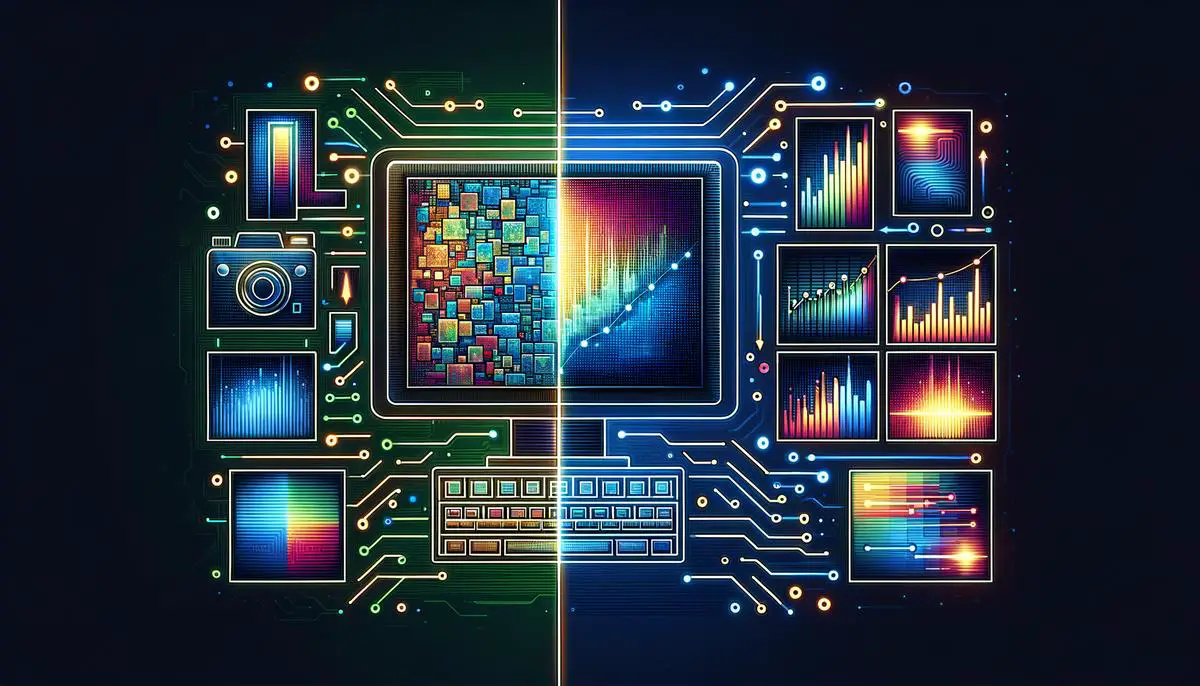
AI-driven Image Recognition and Classification
In the realm of AI-driven image recognition and classification, several significant advancements stand out, particularly in how these processes have been made more accurate and efficient. Let’s delve into key areas where AI has made ground-breaking contributions, including facial recognition, object detection, and scene classification.
Firstly, facial recognition technology has seen a revolutionary transformation, predominantly due to the infusion of AI algorithms. Previously, facial recognition systems relied on detecting and matching facial features, which was often constrained by lighting, facial expressions, and orientations. Today, AI-powered systems employ complex models that can learn from vast datasets containing millions of faces. This capability allows for the identification of individuals with remarkable precision—even in dynamic conditions or when partial occlusions of the face occur. These systems analyze facial features in depth, gauging distances and proportions between key points on the face, thus enhancing both security and user identification processes.
Moving on to object detection, AI has taken huge strides beyond the capabilities of traditional methods. Initially, identifying objects within an image required specific parameter settings for each item class, which was time-consuming and prone to error. However, through the use of deep learning networks, current AI systems can autonomously learn from a plethora of images, distinguishing between thousands of object categories. These AI models, once trained, can detect multiple items in a single image or frame, recognizing them despite variations in size, shape, or partial blockages. This leap forward has been instrumental in applications ranging from retail inventory management to autonomous vehicle navigation.
Scene classification represents another area where AI’s impact has been profound. Earlier techniques required laborious feature extraction and classification steps to categorize an image as a certain type of scene (e.g., urban vs. rural). Now, deep learning algorithms can ingest raw images and, based on learned patterns across expansive image datasets, can classify the overall scene with high accuracy. These systems can also detect contextual details within the scene, thus enabling smarter photo tagging and content-based search functionalities on platforms like social media and digital asset management systems.
Moreover, the accuracy improvements brought by AI to image recognition and classification are nothing short of remarkable. Errors that were commonplace in earlier systems, like misidentifications caused by poor image quality or challenging angles, have been vastly reduced. The efficiency of these systems has similarly benefited, with AI algorithms capable of processing and classifying images at speeds unattainable by human operators and less sophisticated technologies.
In synthesis, the advances in AI have not only expanded the boundaries of what’s possible in image recognition and classification but also opened doors to innovative uses that permeate various facets of life and industry. Whether it’s enhancing security through accurate biometric identification, enabling safer navigation for autonomous vehicles through reliable object detection, or simply making our interaction with technology more intuitive via improved scene understanding, the advancements spearheaded by AI are indispensable. Even though challenges remain—such as ensuring privacy and ethical use of facial recognition—there’s no denying that AI’s role in revolutionizing image recognition and classification is both transformative and enduring.
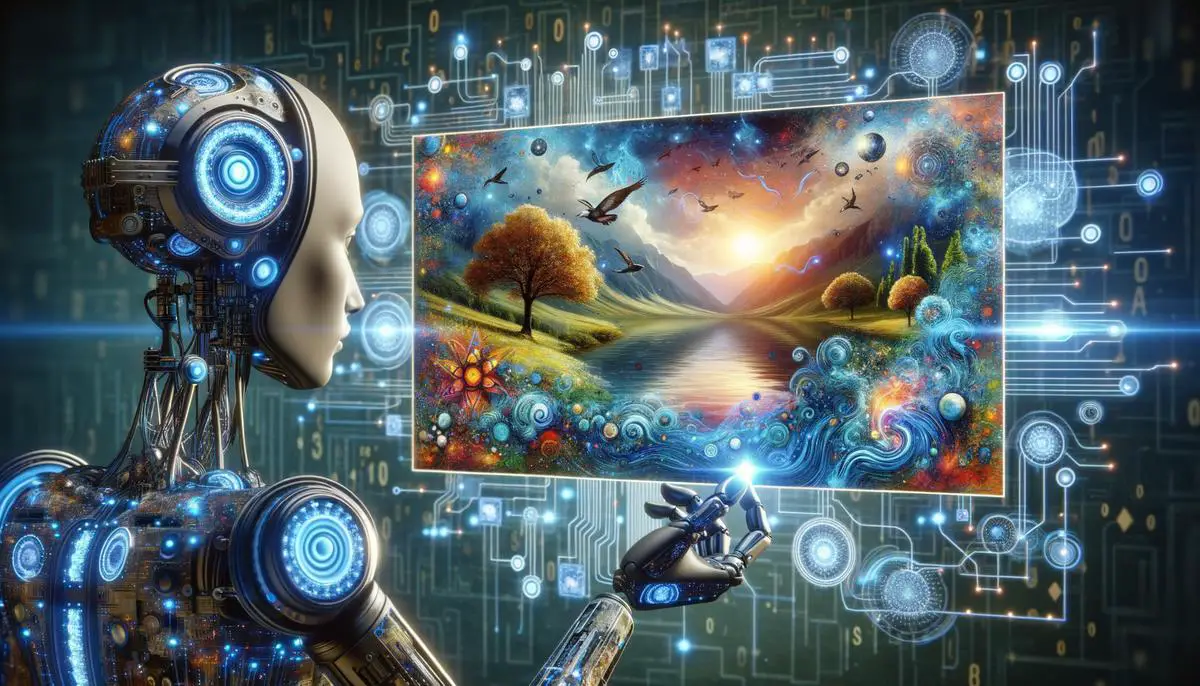
Challenges and Ethical Considerations in AI-powered Image Processing
Main Challenges and Ethical Concerns with AI in Image Processing
As AI continues to advance and become more integrated into image processing, several challenges and ethical concerns have emerged. These issues not only encompass technical limitations but also raise significant questions about the responsibilities of AI developers and users in ensuring ethical standards are maintained.
Data Privacy: One of the primary concerns with AI in image processing is data privacy. With technologies such as facial recognition becoming more common, there’s an increasing amount of personal data being collected and analyzed. This raises questions about how this data is stored, who has access to it, and how long it’s retained. Ensuring that personal data is handled securely and in compliance with data protection laws, like the GDPR in Europe, is a crucial challenge for AI image processing applications.
Bias in AI Algorithms: Another significant issue is the risk of inherent biases within AI algorithms. Since these algorithms are trained on datasets, any biases present in the training data can lead to biased AI models. This is problematic in image processing, especially in applications like facial recognition, where biases can result in inaccuracies that disproportionately affect certain groups of people. Developing strategies to detect and mitigate these biases remains an ongoing challenge.
Potential for Misuse: The power of AI in image processing also opens up avenues for misuse. For instance, “deepfakes” have emerged as a contentious issue, where AI is used to create highly realistic and convincing fake images and videos. This technology can be maliciously used to spread disinformation, manipulate public opinion, or invade privacy. Addressing the potential for misuse and developing mechanisms to identify and counteract maliciously manipulated images is a significant challenge.
Ethical Considerations and Responsible AI Development
Addressing the challenges of AI in image processing requires careful consideration of ethical implications and a commitment to responsible AI development and usage. This includes:
- Ensuring Transparency and Accountability: It’s essential for AI systems to be transparent about how they work and for developers to be accountable for their creations. This means understanding and disclosing how data is used, how decisions are made, and the limitations of AI systems.
- Protecting Data Privacy: As mentioned, data privacy is a major concern. Implementing robust security measures, adhering to legal data protection standards, and respecting the privacy rights of individuals are vital steps in addressing this issue.
- Combating Bias: Developers must take proactive steps to eliminate biases in AI algorithms. This can include using diverse training datasets, regularly testing AI systems for biases, and developing algorithms that can identify and correct their biases.
- Preventing Misuse: There should be guidelines and regulations in place to prevent the misuse of AI in image processing. Additionally, developing technology to detect manipulated images and distinguish them from genuine ones can help mitigate the impact of deepfakes and other forms of misinformation.
In conclusion, while AI continues to revolutionize image processing with its capabilities, it’s crucial to address the accompanying challenges and ethical concerns. By fostering responsible AI development and usage, it’s possible to maximize the benefits of this technology while minimizing its risks and ensuring that it serves the greater good.

Future Trends and Potential of AI in Image Processing
Moving forward into the future of AI in image processing, we find ourselves on the cusp of significant transformations. This journey entails tapping into unexplored territories where AI not only refines existing capabilities but also pioneers novel applications that were once part of science fiction.
1. Advanced Real-Time Video Analysis and ProcessingOne of the promising avenues is the advancement of real-time video analysis. As computational capacities expand and AI algorithms grow more sophisticated, the real-time analysis of video data becomes increasingly achievable. This could revolutionize fields like surveillance, sports analytics, and real-time remote diagnostics in healthcare by offering instant insights and actions based on the video content. 2. Democratization and Accessibility Improvements
Another future direction sees the democratization of AI-powered image processing tools. With the proliferation of open-source projects and cloud-based services, sophisticated image manipulation and analysis capabilities will become accessible to a broader audience, including small businesses and hobbyists. This move may cultivate a more inclusive ecosystem, fostering innovation from all corners of the globe. 3. Interactive Augmented Reality (AR) and Virtual Reality (VR)
The blend of AI in AR and VR presents a thrilling prospect. Imagine AR applications that can intelligently interact with the physical environment in real-time, adapting to changes and providing seamless user experiences. In VR, AI-driven image processing can lead to more immersive environments by enhancing the realism and responsiveness of these virtual spaces. 4. Enhanced Healthcare Diagnostics
AI’s involvement in healthcare image diagnostics is set to become more profound. Beyond mere identification of patterns in X-ray, MRI, or CT scans, AI algorithms will predict disease progression, recommend personalized treatment plans, and possibly discover new indicators of health conditions by correlating data across millions of images. 5. Ethical AI and Reduced Bias
The concern around ethics and bias in AI systems is gaining more attention. Future developments in AI image processing involve architecting algorithms that can detect, correct for, and reduce biases inherent in their training data. This effort is crucial in applications where fairness and impartiality are paramount, such as law enforcement and employment screening. 6. Enhancing Artistic and Creative Processes
In the realm of art and design, AI-facilitated image processing tools will empower artists and designers with new forms of creative expression. From generating intricate visual textures to transforming photographs into works of art emulating famous painting styles — the integration of AI will expand the toolkit available to creatives, making their workflows more efficient whilst opening new horizons for exploration. 7. Breakthroughs in 3D Modeling and Printing
The intersection of AI with 3D modeling and printing technologies foretells radical shifts in manufacturing, architecture, and multimedia design. With AI-driven image processing, converting 2D images into detailed 3D models could become streamlined, reducing the time and effort required to create accurate 3D representations. This progress could significantly impact prototyping, customized production processes, and even entertainment industry practices. 8. Global Connectivity and Instantaneous Translation
The fusion of AI-driven image recognition with real-time translation services portends a world more interconnected than ever. Imagine aiming your device camera at a sign in a foreign language and seeing the translation overlaid on your screen instantaneously—not just in text but integrated into the visual context with appropriate formatting and styles. Such advancements could break down language barriers, fostering global communication and understanding. The horizons for AI within the realm of image processing are vast and varied. Yet as we navigate these potentials, it remains crucial to tread thoughtfully, aligning technological advancements with ethical considerations to ensure these innovations contribute positively to society. The journey ahead is undoubtedly an exciting one — filled with challenges to overcome and immense possibilities to unleash.
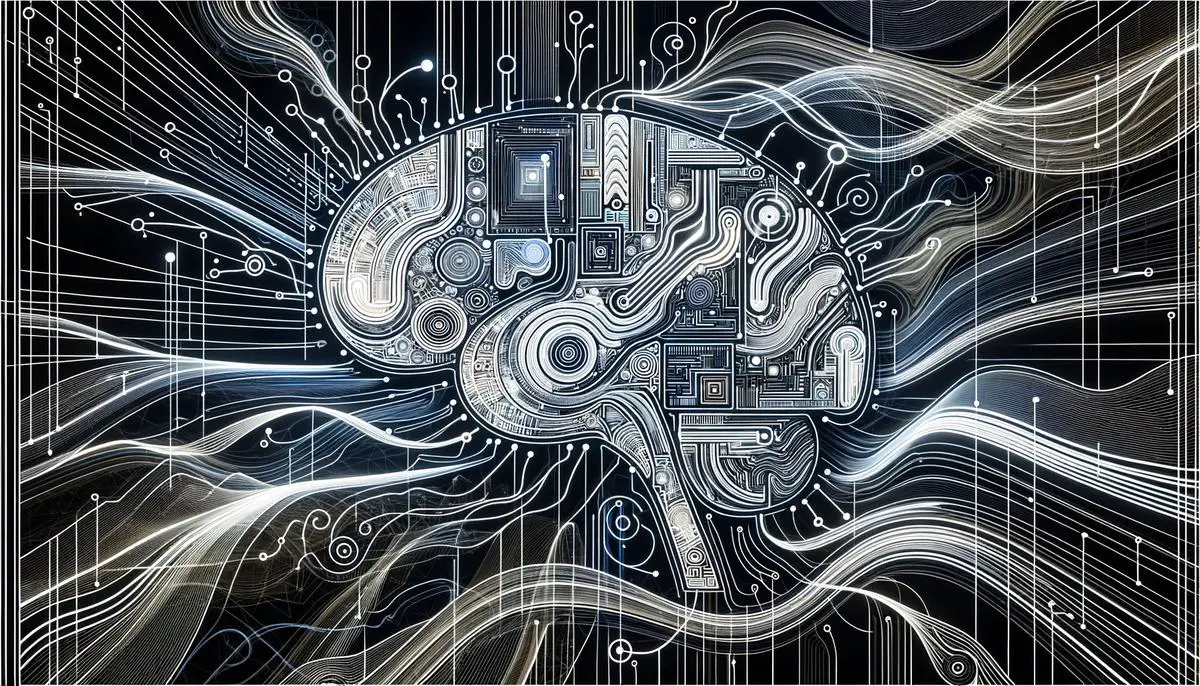
The exploration of AI in image processing reveals a field at the forefront of technological innovation, pushing the boundaries of what’s possible in digital imagery. As we look ahead, it is evident that AI will continue to play a pivotal role in shaping the future of this domain. The potential for groundbreaking applications across various sectors including healthcare, security, and entertainment is immense. However, as we embrace these advancements, it remains imperative to address ethical considerations and ensure that developments are guided by principles that prioritize fairness, privacy, and transparency. Embracing this approach will enable us to harness the full potential of AI in image processing while safeguarding against risks and ensuring its benefits are equitably distributed.